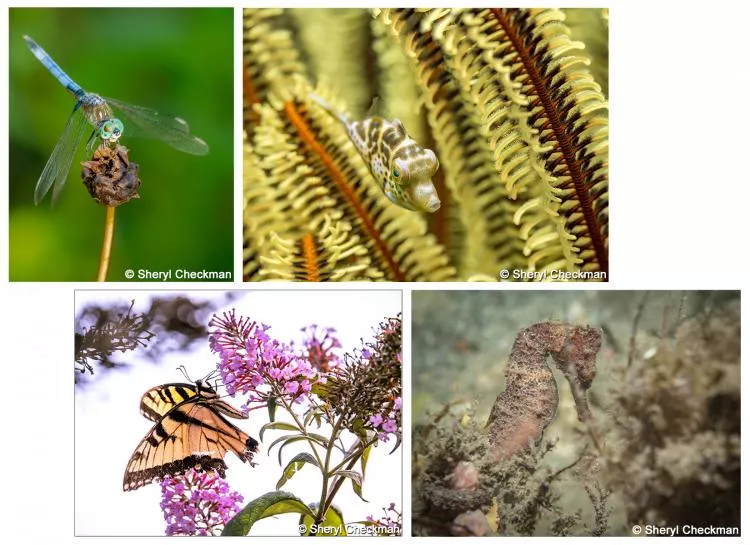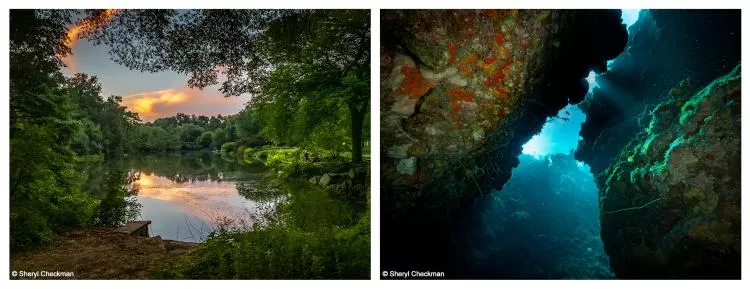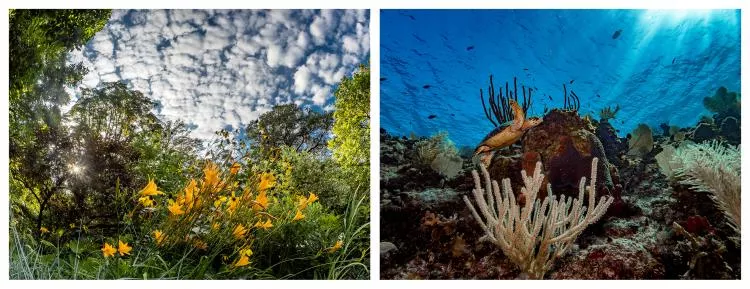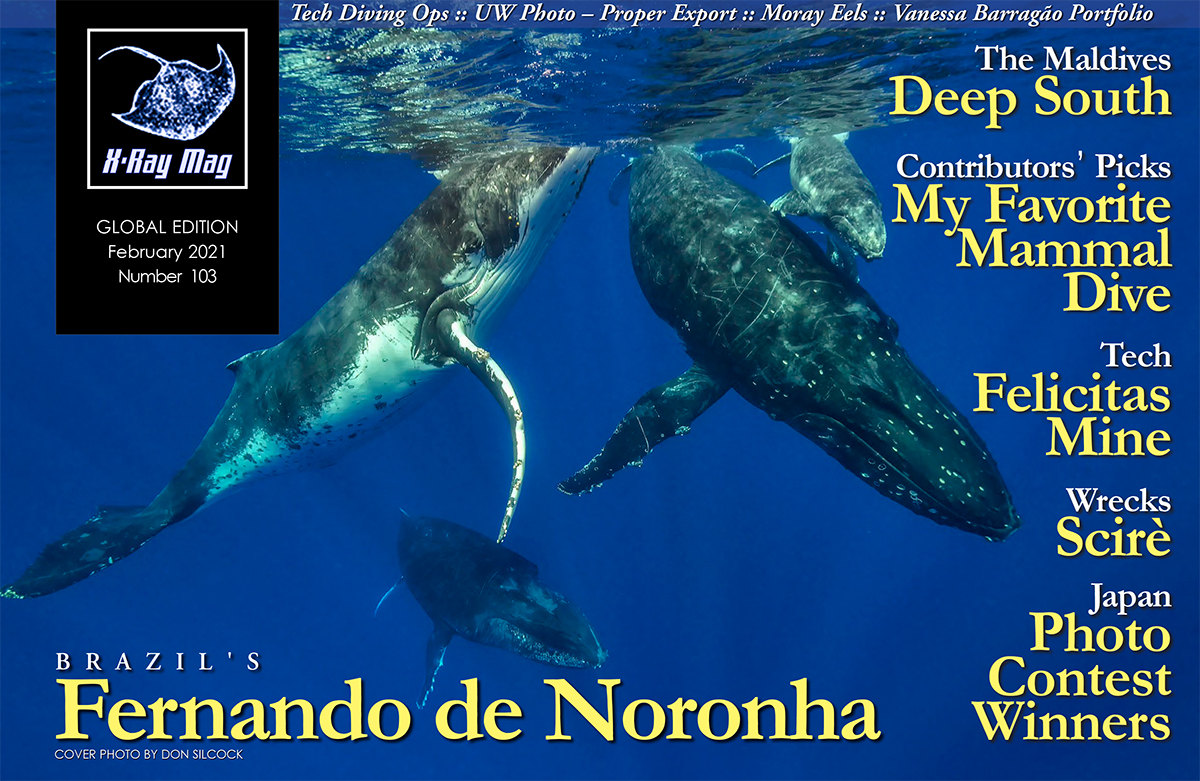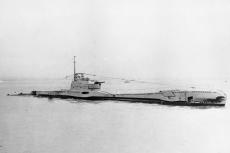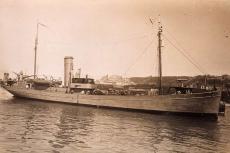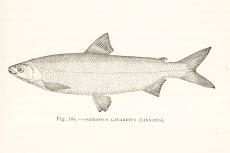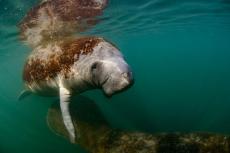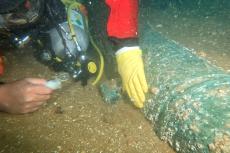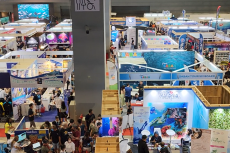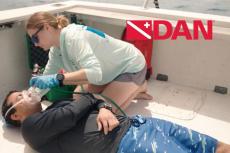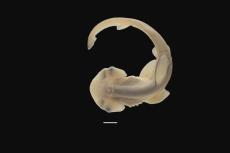Back in 2020, we challenged underwater photographers—many of whom found themselves stuck inside or unable to go diving during the pandemic—to search through their image archives and match a topside shot with one of their own underwater shots, in a side-by-side comparison. Featured here are the eye-catching and sublime image comparisons of three photographers, from the New York Underwater Photographic Society (NYUPS) at the NYC Sea Gypsies dive club, who rose to the challenge.
Contributed by
Sheryl Checkman
Sheryl Checkman is a graphic designer living in New York City. She got involved with NYUPS to meet and learn from other like-minded underwater photographers in the New York area.
“Aways a lover of the ocean and swimming, I got my open water certification in 1988 after returning from a trip to Club Med, Turks & Caicos, where I took the week-long Club Med certification course,” said Sheryl. “I started to take photos underwater in the mid-2000s in order to combine my love of the underwater world with my artist’s eye for beauty and pattern. I started out with point-and-shoot camera systems with no flash, and then later exchanged my equipment for my current micro-four-thirds system, housing and strobes.
Initially, Sheryl combined and manipulated her photos into what she called “dive art,” creating her own underwater world-view from the initial low-resolution images. She said, “As I upgraded my equipment, I began taking some underwater photography workshops in order to learn to take photos underwater that did not need manipulation to make them stand out. I have used this year out of the water to continue to improve my photographic skills on land so that when I can get back underwater, I can use what I have learned.”
Regarding her Comparison I, Sheryl said, “In choosing this pair to compare, I found that the most compelling similarity for me is the perspective of view and the framing. In both of these images, light is the subject. In the underwater image, the light coming through the coral swim-through is framed by the cut-out in the reef structure. In the land photo, the light of the last colors of the setting sun are framed by the dense tree foliage surrounding the sky and water.”
About Comparison II, Sheryl said, “I chose this pair also for the perspective. In each, I am looking up—towards the surface in the underwater image—and towards the sky in the land image. The coral and the sea turtle are reaching for the light towards the surface above just as the dallies reach for the sky.”
In her Comparison III, Sheryl said, “I chose this pair for their similar diagonal composition and also both subjects’ ability to camouflage themselves. When shooting the dragonfly, I had to look very hard to see him against the background of the garden foliage. I shot with a shallow depth of field in order to separate him from the background. The juvenile filefish is hiding among the stems of the crinoid, blending in at the same angle.”
For Comparison IV, Sheryl said, “I selected this pair to compare more for their difference than similarity. The seahorse is camouflaged, almost colorless, blending in with his surroundings, while the monarch butterfly is quite prominent, its bright yellow and black color silhouetted against the purposely blown-out sky. They both, however, give me a similar feeling of being at home in their surroundings. The seahorse is holding on to the coral foliage just as the butterfly stands on the flower.”
View more of Sheryl’s photos under the portfolio tab on her website at checkmandesign.com, or 500px.com/p/sherylcheckman?view=galleries&.
Anita George-Ares
Anita’s love of the ocean and diving came from her father who was a scuba instructor. She later became a marine biologist, scuba instructor, and inductee into the Women Divers Hall of Fame (wdhof.org). Initially, she used underwater photography to document marine life and behavior during research expeditions. Currently, she lives on Staten Island, a New York City Borough. She and her husband are both members of the New York Sea Gypsies, which includes NYUPS.

In Comparison I, the main subjects in both images are sharks. Anita said, “There is a similar symmetry in the vertical position of the snout with the teeth and nostrils in view.”

Of Comparison II, she said, “The Prague bubble reminded me of a large comb jelly. Since I did not have an image of a comb jelly, I substituted an image of a white-spotted jellyfish. The subjects of both images have a similar horizontal symmetry and transparency.”
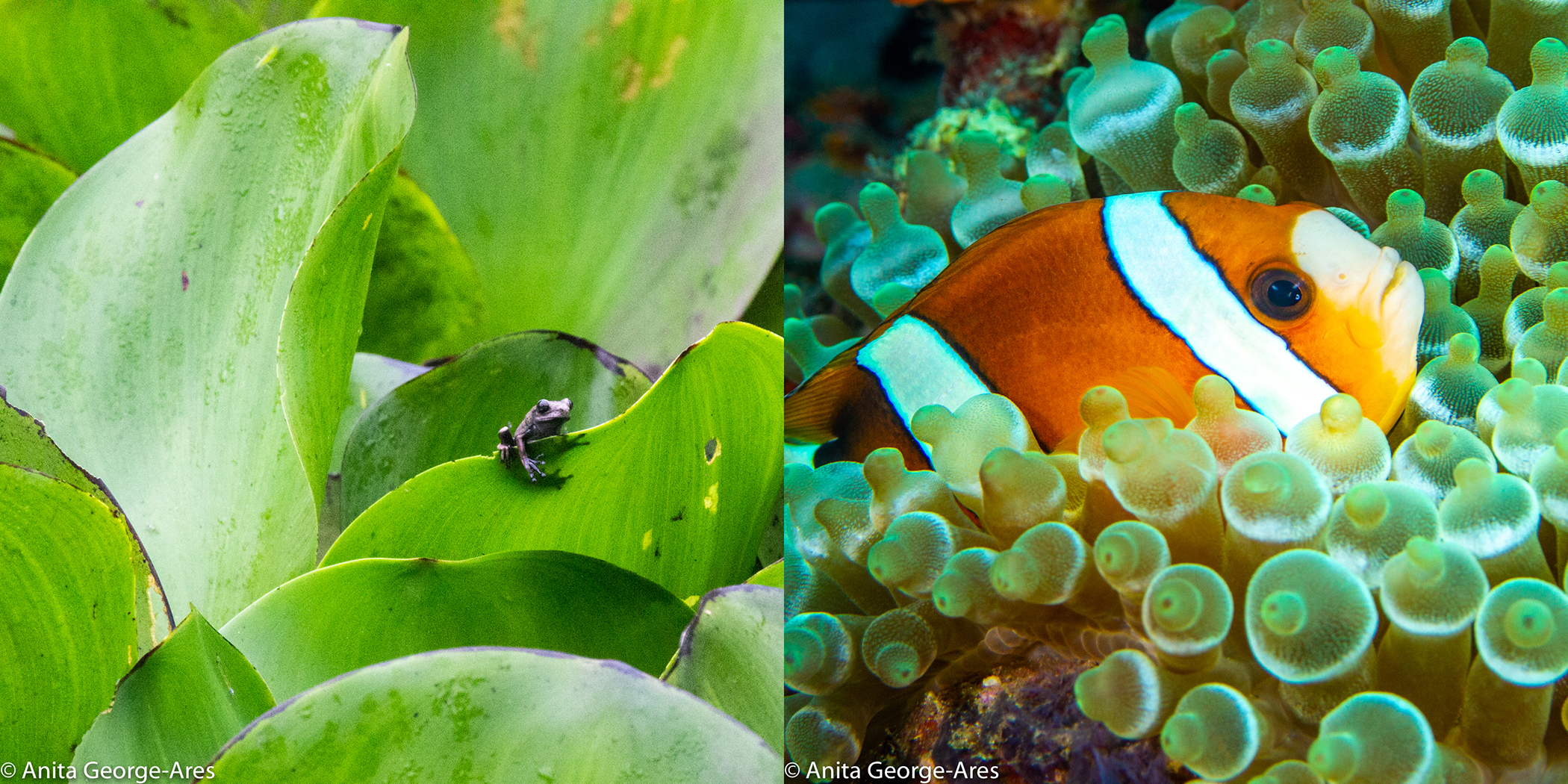
Of Comparison III, Anita said, “The frog is perched on a green, translucent water hyacinth leaf. The anemonefish is nestled among the tentacles of a green, translucent bubble-tip anemone.” More of Anita’s photographs can be seen on her Facebook page.
John Ares
John is an award-winning professional photographer and former PADI Course Director. He has been doing photography since age seven and diving since 1974. It was inevitable that he would bring a camera underwater. He has a master’s degree in marine Sciences and has taught underwater photography, Lightroom and Photoshop. While he shoots nature, travel, fine art, portraits and food photography, his main passion is underwater photography. He has been a contributor to DivePhotoGuide.com, written scientific articles and his photographs have been published in Aqua, the International Journal of Ichthyology among others. John has been a member of the NYC Sea Gypsies for many years, so it was natural for him to get involved with NYUPS.
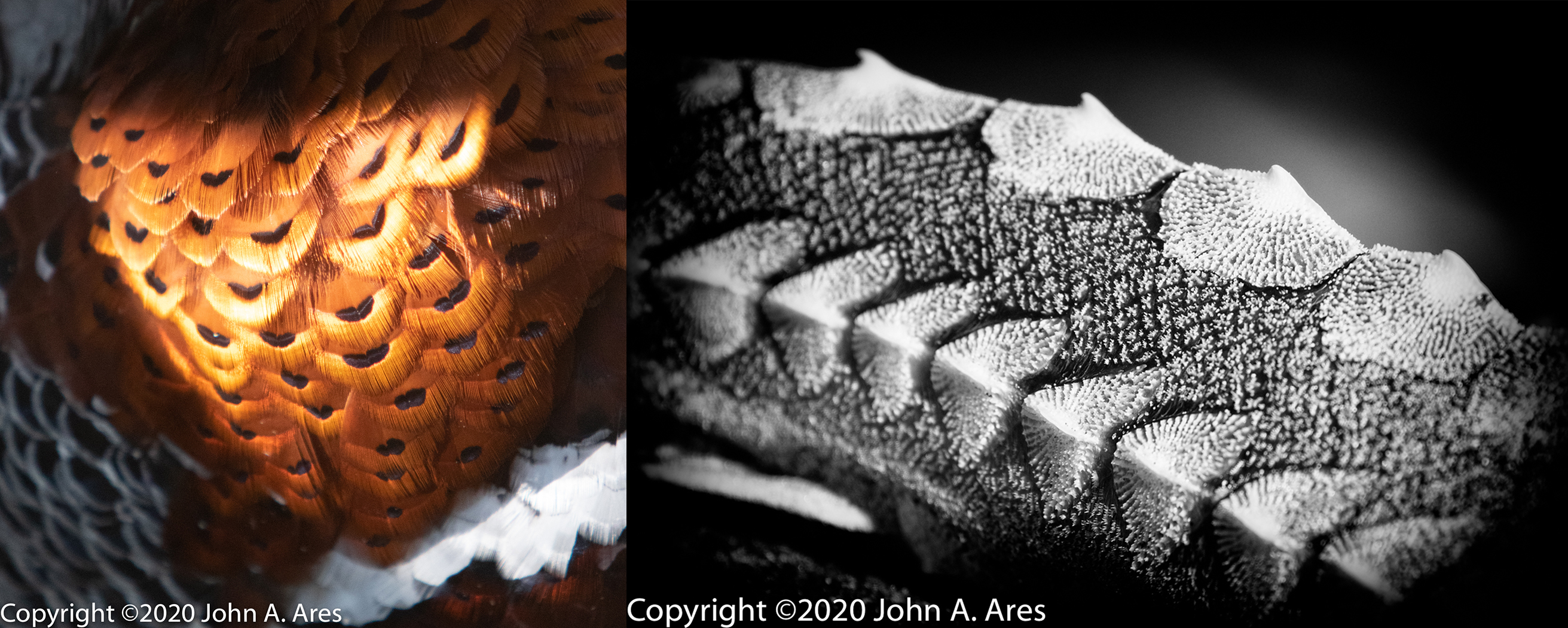
In John’s Comparison I, he said, “For the first pair, it seemed that feathers and scales were naturally complements of each other. One exclusively for Birds and one for Fish and Reptiles. The Elliot’s Pheasant feathers were at the Staten Island Zoo in New York City, and the sturgeon was actually washed up on the beach in Staten Island, NY.”
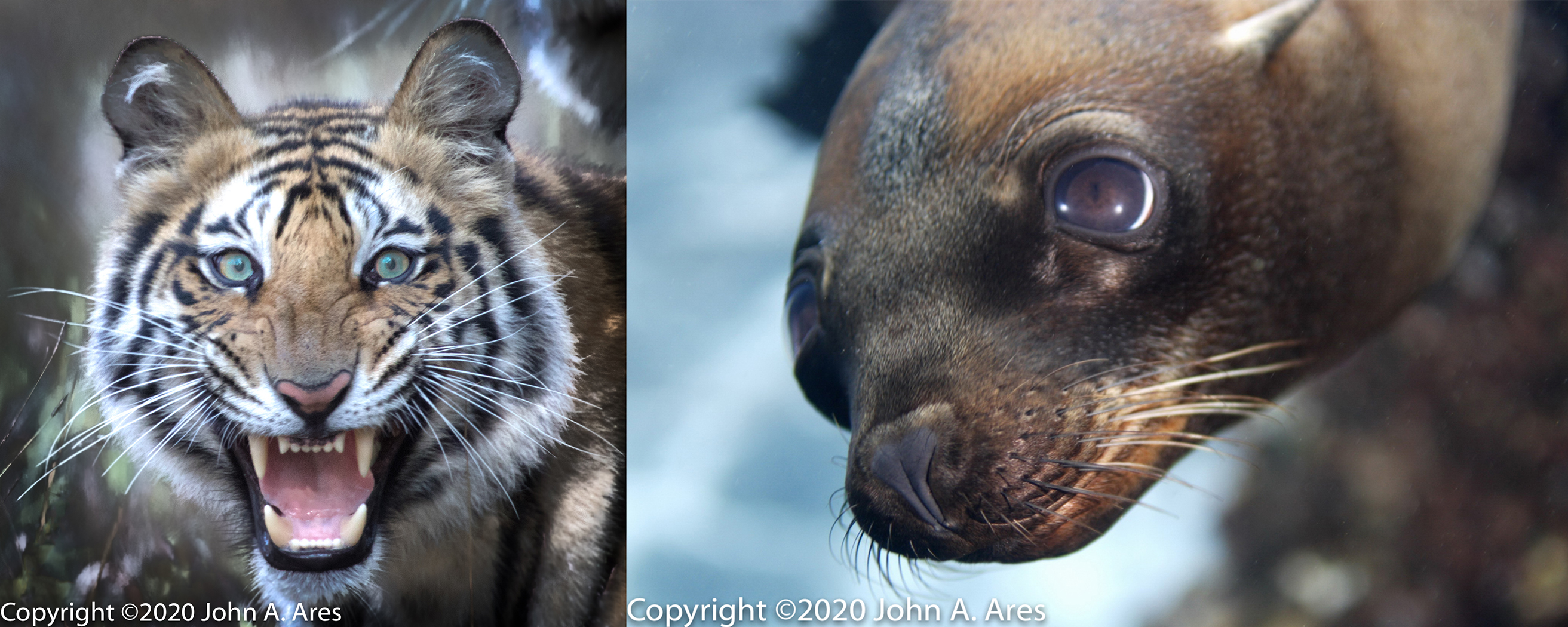
Regarding his Comparison II, he said, “The second pair has whiskers in common, in addition to eye contact. The tiger was photographed in the wild in Bandhavgarh National Park in India. The sea lion was photographed at Los Islotes, La Paz, Mexico.”
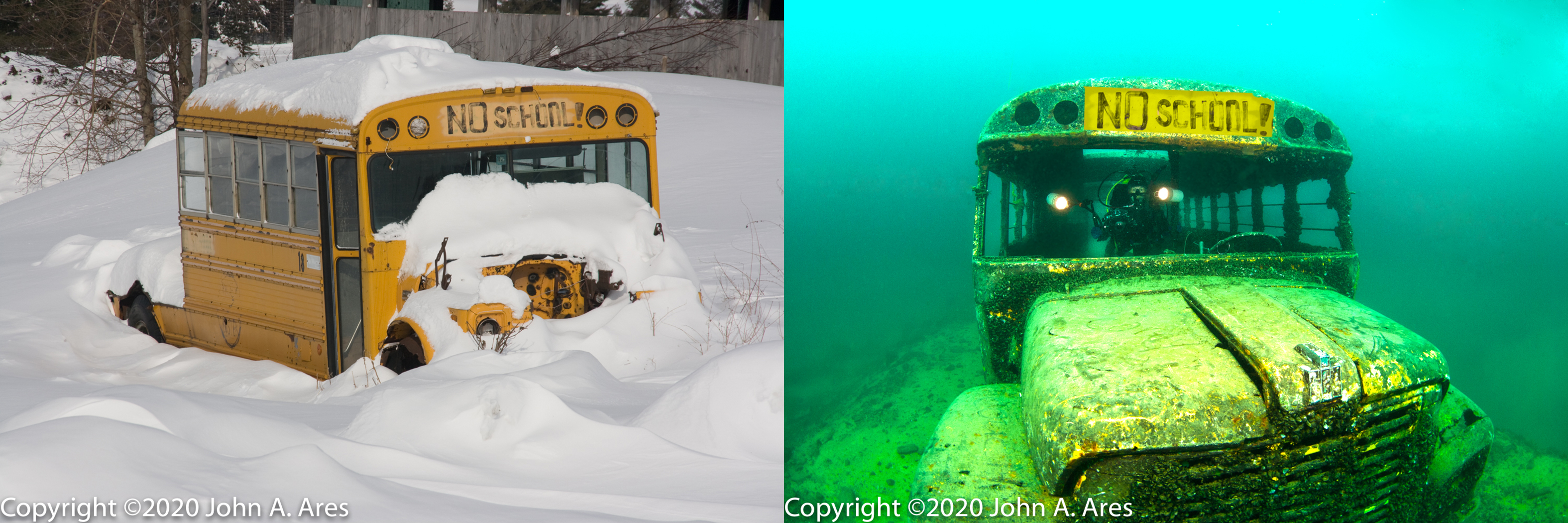
On John’s Comparison III, he said, “The third pair are both school buses surrounded by forms of water: the first one in snow in Vermont, USA, and the second one underwater in Dutch Springs Lake, Pennsylvania, USA, with a little “wink-wink” nod to the Vermont bus.”
John’s work can be seen online in about 100 galleries, which can be found at: JohnAres.com. ■
Special thanks to Larry Cohen and Olga Torrey for their assistance with the X-Ray Photo Challenge and this article.

